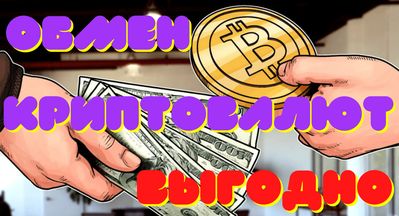What’s the Deal With the New ‘Unicoin’ International CBDC

This week, the Digital Currency Monetary Authority launched a new international CBDC called Unicoin (UMU). What is it, and what are its implications?
Central bank digital currencies (CBDC) have been a hot topic this year. The European Central Bank is due to finish its investigation into a digital euro in October. This week, the Bank of England announced it is looking to grow its CBDC team for a potential ‘Britcoin.’ Also, this week, Sweden has just published the third round of its pilot report for its own e-krona.
While many countries are in the investigation phase, far fewer have launched one—or committed to doing so. The Bahamas’ Sand Dollar was issued by its central bank all the way back in October 2020, becoming the first nationwide CBDC in the world. Nigeria, Africa’s most populous country, launched its eNaira last year. However, it has been plagued with a lack of adoption and merchants willing and able to accept the currency.
So the news this week that the Digital Currency Monetary Authority (DCMA) has announced the launch of a new digital currency is surprising. The currency—called the Universal Monetary Unit (UMU) or Unicoin— was announced during the International Monetary Fund (IMF) Spring Meetings in Washington, D.C. (UMU is distinct from another project called Unicoin. The two are not related. BeInCrypto will use UMU going forward.)
The fledgling currency already has its own symbol, the ANSI Character, Ü.

Universal Monetary Unit UMU DCMA Landing Page
Who Is the Digital Currency Monetary Authority?
The DCMA is a private organization that advocates for the advancement of digital currencies in central banks and money systems. According to a press release, its executive team has been working with governments and central banks on blockchain and digital currency cryptography since 2013.
The DCMA is also a monetary authority. “UMU is our monetary asset, and we back it,” said Darrell Hubbard, the Executive Director of the DCMA, and the chief architect of UMU, in an interview with BeInCrypto. “Meaning, you can always redeem the value from us for the value paid to us. That’s the role of a monetary authority.”
The group aims to promote global trade by integrating international payments and settlements with digital currency. It has “between 50 to 75 Human Resources at any given time,” continued Hubbard. “Our Board is from central banks and financial institutions.”
Its thesis, if you want to call it that, is that most cryptocurrency does not fulfill the needs of the financial sector. Indeed, Bitcoin’s whitepaper stated that it was not designed to operate within regulated financial institutions. However, with central banks exploring cryptocurrency and digital assets, the DCMA believes there needs to be cryptographic cash that can meet the requirements of banks.
Currently, global banking recognizes two legal forms of cash: regulated e-cash and physical cash. Bitcoin’s electronic cash hasn’t been widely adopted in banking because it doesn’t cryptographically represent either of these.
However, the DMCA’s UMU/Unicoin currency is explicitly designed to work with financial and monetary institutions.

Governments around the world are pursuing CBDC technology. Source: Atlantic Council
What is the UMU/Unicoin CBDC?
It is important to note that UMU (or Unicoin) will not be a central bank digital currency in the traditional sense. At least not in the foreseeable future. It is intended to function “like a CBDC.” However, it is legally a money commodity.
“UMU functionally operates as a CBDC,” said Hubbard. “But it’s intentionally working across all national jurisdictions. Not just for a local economy.”
Its whitepaper has a passage that sums up their thinking:
The IMF assumes that all crypto assets pose a risk to the international monetary system. The IMF does not consider, there could be a class of digital currency innovations designed to enhance the safety and stability of the international monetary system
According to the DCMA, UMU/Unicoin is designed to be suitable for central banks to create retail (for use by the public) and wholesale CBDCs (for use by financial institutions.) It also claims to fix a problem: the slow, inefficient, and complicated process of international bank transfers.
According to the release, banks will be able to link UMU digital currency wallets with SWIFT codes and bank accounts to process cross-border payments similar to SWIFT but over digital currency networks. This will be done at wholesale foreign exchange rates and with settlements happening in real time. This contrasts with the traditional model, where international bank transfers can take days.
However, UMU will not be a legal tender for negotiating domestic prices or international trade agreements. Instead, it will function as a store of value, mitigate currency devaluation, and be used as a method of payment.
UMU has premium exchange rates built into its wallet and can convert any settlement currency amount to the equivalent UMU amount. Its creators hope that one day merchants could accept UMU for the equivalent market value for their goods and services priced in any national legal tender.
There’s Some Way To Go
For the UMU to take off, it will need buy-in from the financial system and central banks. Something that it doesn’t have yet. On the retail side, UMU will have to compete with the likes of Ripple and stablecoins. Both of these enable international transactions to happen at a fraction of the speed of many bank transfers.
The DCMA has also drafted a law for their CBDC. Their proposed Universal Monetary Unit Model Law was developed in collaboration with central banks from Advanced Economies and Emerging Markets. The legislation includes UMU/Unicoin as a complementary money commodity that serves as a store of value, designed to help mitigate the potential depreciation of the local currency. Additionally, UMU/Unicoin would function as a payment currency during settlement transactions.
There are currently no confirmed partners, and the DCMA was not able to confirm which economies it has been working with.
“The DCMA is under NDA with these economies,” said Hubbard. “However, our access is either central bank governors or finance ministers. I can disclose our largest commitments are with the African Union, who are introducing us to all governors on the continent.”
“Because of politics, we’ve been asked to keep participation economies under NDA. In the near, we will be able to disclose our partners.”







 Bitcoin
Bitcoin  Ethereum
Ethereum  Tether
Tether  Dogecoin
Dogecoin  USDC
USDC  Cardano
Cardano  TRON
TRON  Chainlink
Chainlink  Bitcoin Cash
Bitcoin Cash  LEO Token
LEO Token  Litecoin
Litecoin  Ethereum Classic
Ethereum Classic  Cronos
Cronos  Stellar
Stellar  Dai
Dai  Monero
Monero  Stacks
Stacks  OKB
OKB  Hedera
Hedera  Cosmos Hub
Cosmos Hub  Theta Network
Theta Network  Maker
Maker  KuCoin
KuCoin  Gate
Gate  Algorand
Algorand  Polygon
Polygon  EOS
EOS  NEO
NEO  Tezos
Tezos  Zcash
Zcash  Tether Gold
Tether Gold  Synthetix Network
Synthetix Network  TrueUSD
TrueUSD  IOTA
IOTA  Bitcoin Gold
Bitcoin Gold  Holo
Holo  Dash
Dash  0x Protocol
0x Protocol  Zilliqa
Zilliqa  Enjin Coin
Enjin Coin  Ravencoin
Ravencoin  Siacoin
Siacoin  Qtum
Qtum  Basic Attention
Basic Attention  Decred
Decred  Ontology
Ontology  NEM
NEM  Lisk
Lisk  Status
Status  Numeraire
Numeraire  DigiByte
DigiByte  Nano
Nano  Waves
Waves  Pax Dollar
Pax Dollar  Hive
Hive  Steem
Steem  Huobi
Huobi  BUSD
BUSD  Ren
Ren  OMG Network
OMG Network  Bitcoin Diamond
Bitcoin Diamond  Bytom
Bytom  Kyber Network Crystal Legacy
Kyber Network Crystal Legacy